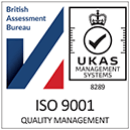Renowned basketball coach John Wooden once said that “flexibility is the key to stability”.
While the basketball courts and the pharmaceutical industry are worlds apart, the statement holds for many aspects of modern-day medicine development where flexibility is increasingly critical to success. This is apparent not least in the growing area of real world data capture, where rising interest has brought a wide variety of study types and methods for teams to handle. This article will discuss how flexibility and modular technology are instrumental to delivering successful real world evidence studies and how we at Cisiv can help.
While real world evidence is a ‘hot’ area, with the potential to transform how we deliver medicines to patients, the business of capturing real world data comes with a host of known challenges. Typically, in a real world evidence study:
- Visit schedules are unstructured and follow routine clinical care
- Missing data is common
- With the lower frequency of data entry and monitoring, obtaining good quality and complete data can be challenging
Wide population and site range potentially naïve to research
Increased demand for direct from patient data and remote data collection resulting in the need for easy to use technology with limited burden on the user.
Traditional clinical electronic data capture (EDC) systems do little to help mitigate these issues as they are not specifically designed to support real world data capture methodologies. By their very nature, they seek to collect data in a controlled rather than a flexible manner. So, when data availability is an issue (a natural occurrence in many real world studies) it may be flagged as a protocol violation.
In real world settings this concept does not exist as the reasons for lack of data entry such as erroneous data or missed/delayed visits can be genuine. If a clinical EDC system is being used to collect real world data (RWD), the user will be forced to enter data that does not exist. This will inevitably result in challenges in the consistency of data collection across the study.
Several confounding factors will influence how sites treat patients and therefore what data is collected and how engaged patients are in providing data directly.
Traditional clinical EDC systems will fail to ensure completeness and accuracy of data collected. When used for RWD there is the risk of data entry blockers or incorrect and bogus data in order to complete data entry.
Consequently, this can lead to the need for increased data management (if costs permit) but more problematic is inconsistency in data which cannot be used as evidence for the study. The expectation for monitoring is high in RCTs but more limited in real world situations. For example, in real world studies, it can be challenging to gain engagement from the sites to respond directly to data queries, meaning data is not complete and accurate when initially entered, it could become unusable. Systems therefore must do more heavy lifting by using edit checks and conditional logic to ensure that the data is corrected at the point of entry and free of anomalies. Fluid workflows that closely guide the user and encourage only critical data collection are often the best approach to facilitate data collection in real world settings. Yet, such flexibility is not typically reflected in traditional EDC systems designed for real world data capture.
Importantly, within a real world setting, the study follows the patient and not the other way round. Data is generated through standard practice activities, at varied and flexible time points depending on the patient and the site, instead of defined clinical protocols that demand data capture at fixed times. Clinical trial EDC systems, with workflows that expect doctors and sites to adhere to strict visit schedules rather than accommodating the natural follow up of clinical practice can all too often result in impaired engagement and reduced volume and quality of data collection.
EDC systems for real world studies need to be fit for purpose and enable simple but varied workflows to guide users to provide data based on standard of care. Data entry workflows should be logical, but equally considerate to study endpoints. They must ensure data collection of critical data can be guaranteed but allow for optional data collection when data can genuinely be missing in this setting.
Further challenges of real world data capture
The design, scope, and sheer scale of real world evidence studies are also distinct from clinical studies. Many real world studies are international, enrolling vast numbers of subjects and typically see frequent protocol amendments and variations between countries. While we do see similar design categories, each has unique features, and there is often substantial variety from study to study in data collection workflows and data points.
These characteristics demand flexibility of the data capture technology to make swift, seamless changes. They also need systems to strike the delicate balance between standardising forms and templates to support efficiency while allowing sufficient adaptability and leeway for variation in the design process. We designed our data collection platform (Baseline Plus) with this versatility at its heart.
The ability to build and scale capabilities
If the requirements of the study evolve, the RWE team may need to access expanded technology (for example adding ePRO functionality when capture of ongoing patient outcomes is required) while retaining a unified system and platform. This is made possible through modular systems, which build capability through a single interface.
Real world data can be collected through various designs and deploy multiple technologies from EDC alone or EDC in tandem with ePRO and eConsent tools. These studies include:
- Managed or early access programmes
- Pregnancy registries
- Post authorisation safety studies (PASS)
- Combining chart reviews with a prospective study
Modular systems allow teams to scale their solution and modify it to what they need at the time – adding components to meet their specifications without losing a streamlined experience in terms of data collection, linkage, reporting, and training. On the other hand, from an investment point of view, teams can acquire the modules they need when they need them, reducing upfront outlay. If required, each module can also operate as a standalone part.
This technological flexibility is delivering positive outcomes for CROs and pharma companies alike, by reaping the benefits of modular systems tailored for RWE data collection. For example, we supported a global CRO in one recent project by expanding the scope of an ongoing managed access program to incorporate RWD. We swiftly helped them migrate their study across to Baseline Plus without the need to re-enrol patients. With our support and leveraging the flexible tools in our system, they are expanding the scope of their offering to their customers by offering a more comprehensive range of real world evidence studies in a greater number of territories and populations.


